10 Most Admired Paintings by Sandro Botticelli
Alessandro di Mariano de Vanni Filipepi (c.1445 - 1510), better known as Sandro Botticelli was rediscovered as one of the greatest Renaissance painters only in the 19th century. Even though he achieved great fame and admiration during his lifetime, and was even called by the Pope to help decorate the Sistine Chapel, his work fell into oblivion after his death. Famous for highly personal and individual style, the celebrated artist also worked for the Medici family which sponsored some of the greatest masterpieces of Italian Renaissance, including Botticelli’s.
The Birth of Venus
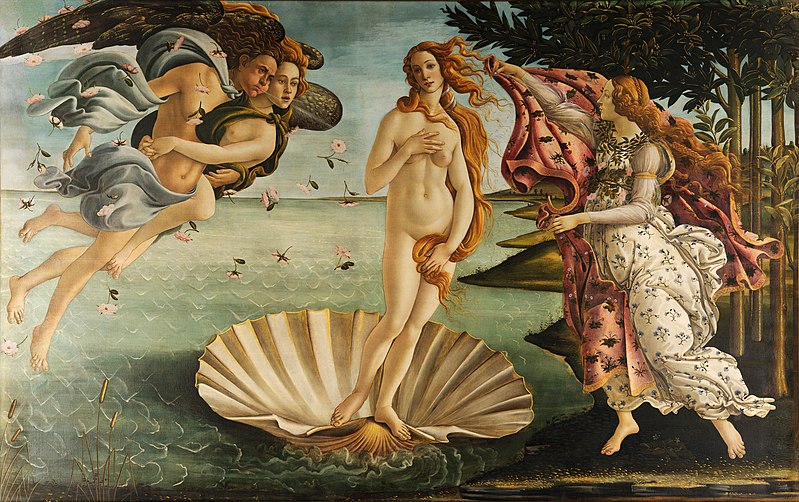
The Birth of Venus is the most famous and most admired of all Botticelli’s paintings. Probably created sometime in the mid-1480s, the painting depicts the birth of the Roman goddess of love, beauty and fertility emerging as fully-grown from the sea foam. She is painted standing on a large scallop shell while being blown to the shore by two wind gods on her right. On the shore, the goddess is being awaited by a young woman holding a large cloak. The latter is most often identified as one of the three Greek goddesses of the seasons called the Hours or Horae. Today forming a part of the collection of the Uffizi Gallery in Florence, Italy, this Botticelli’s masterpiece is thought to have been created for the Medici.
Primavera
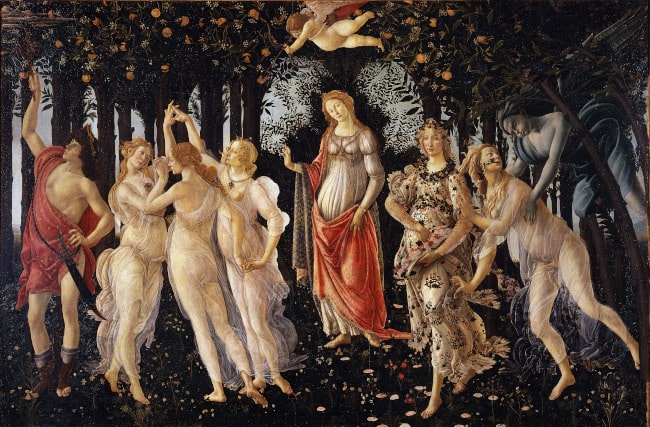
Venus is also the central figure in Botticelli’s Primavera (Italian for Spring). The Roman goddess of love is standing a bit further back but she is dominating the scene in the orange grove which includes nine figures of classical mythology. At the right is depicted Greek god of west wind, Zephyrus taking the nymph Chloris who is being transformed into a deity called Flora. Above Venus is Cupid with an arrow pointing at three Graces and the messenger of Gods, Mercury at the left. Since these particular characters don’t appear together in any known story of classical mythology, the meaning of the painting remains a subject of debate to this day. Just like The Birth of Venus, Primavera was probably commissioned by the Medici.
Adoration of the Magi
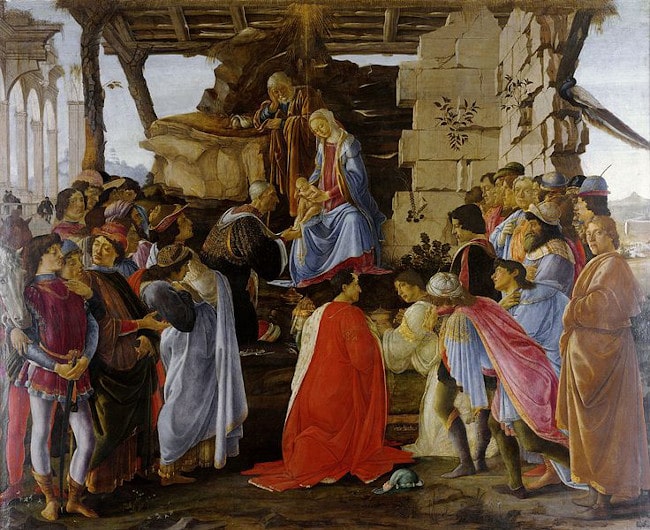
The Adoration of the Magi depicts a scene from the Bible in which the Three Magi, also known as the Three Kings or (Three) Wise Men come to visit Baby Jesus and bring him the gifts of gold, frankincense and myrrh. Botticelli painted several versions of this popular Biblical theme during his lifetime; this particular version was created around 1475 for the Florentine banker Gaspare di Zanobi del Lama. It also includes several members of the Medici family, with Cosimo de Medici and his sons Piero and Giovanni being depicted as the Three Magi. Originally located in the chapel of the Lama family in the Church of Santa Maria Novella, the painting is today housed in the Uffizi Gallery.
Madonna of the Magnificat

The Madonna of the Magnificat is the so-called tondo or circular painting which became highly popular during the Renaissance. Created around 1481, the painting depicts Virgin Mary on a throne with Child Jesus sitting on her lap. With her right hand, she is writing the Magnificat or the Song of Mary and her left hand holding a pomegranate. Mary, who has been suggested to portray Lucrezia Tornabuoni, wife of Piero de Medici, is being crowned by two angels who are thought to be her sons Lorenzo and Guiliano. Not much is known about the painting’s history including it’s commissioner and original location. In 1784, it was acquired by the Uffizi Gallery from a private collection.
Venus and Mars
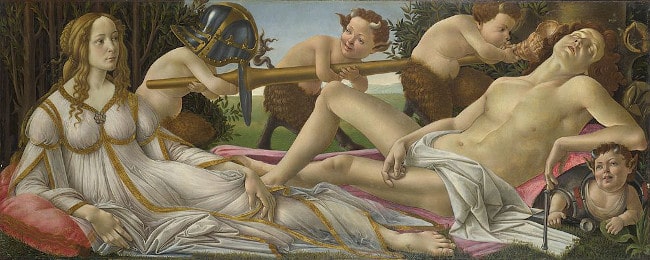
Venus and Mars is another Botticelli’s masterpiece that includes the Roman goddess of love, Venus; this time with the Roman god of war and her lover Mars. The couple is depicted reclining in a forest, with Venus being awake and Mars being asleep. They are surrounded by baby satyrs playing with Mars’ arms and blowing a trumpet in his ear. The painting which is thought to be a part of a bedroom furniture such as bedhead thus symbolizes the power of love which conquers all, including war. Created around 1485, this work is today housed in the National Gallery (London) that acquired it in 1874.
Map of Hell (Dante’s Divine Comedy)
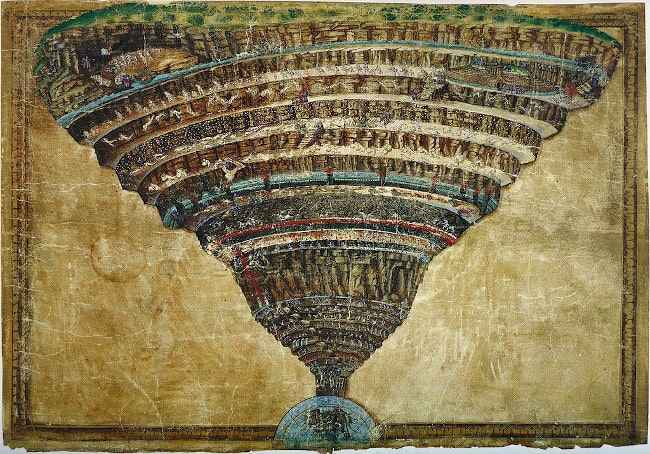
Botticelli’s Map of Hell is one of 92 illustrations created by the famous painter to embellish Dante’s Divine Comedy. The illustrations were included in a manuscript version of Divine Comedy which was commissioned by Lorenzo di Pierfranscesco de’ Medici. The manuscript was rediscovered in a private collection only in the 19th century when it was acquired by the Museum of Prints and Drawings in Berlin. However, eight drawings including Botticelli’s Map of Hell were bought by the Vatican Library from the collection of Queen Christina of Sweden (1626 - 1689) in the 17th century. Botticelli also created drawings for a print version of Dante’s Commedia but they are unfortunately lost.
Madonna and Child, Avignon
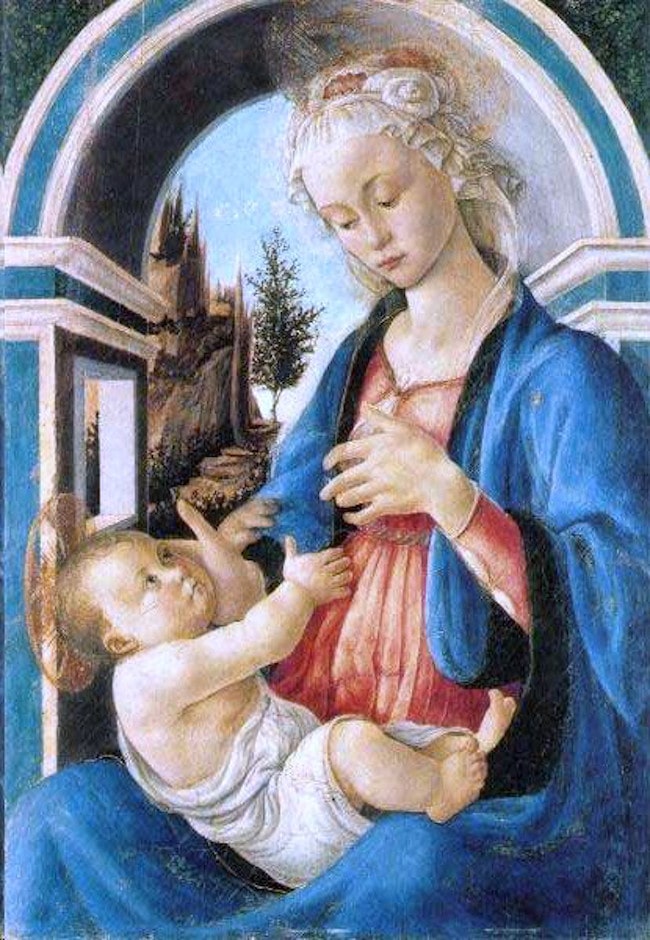
One of several Botticelli’s paintings titled Madonna and Child, this version differs from others in that it depicts the so-called Nursing Madonna or the moment Mary is about to breastfeed Child Jesus. Wearing her traditional red and blue clothing, Mary is reaching towards her breast with her left hand, while holding Child Jesus on her lap with her right hand. They are shown sitting in the loggia or covered exterior gallery with an ached opening revealing steep landscape in the background. The painting, which is today on permanent display at the Musée du Petit Palais in Avignon, France, was acquired by Napoleon III for the Louvre in 1861 from the Campana collection.
Youth of Moses

Also referred to as the Trials of Moses, the Youth of Moses is one of three Botticelli’s frescos in the Sistine Chapel in Rome, Italy, with the other two being the Temptations of Christ and the Punishment of the Sons of Corah. The fresco was created in 1481, the same year Botticelli and other prominent Florentine artists were summoned by Pope Sixtus IV to decorate the newly renovated Sistine Chapel. The Youth of Moses depicts several notable episodes or events in Moses’ life, starting with his killing of a Egyptian who was beating a Hebrew in the right corner and ending with the Exodus or Moses’ leading the Israelites from Egypt to the Promised Land.
Portrait of Giuliano de’ Medici
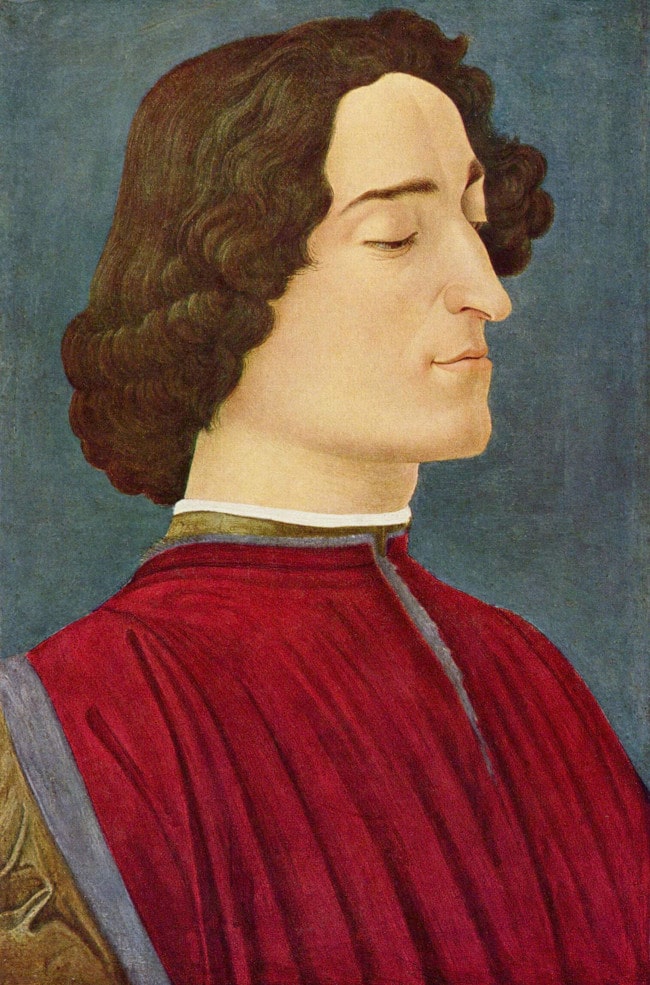
Botticelli painted the Portrait of Giuliano de’ Medici around 1478 to 1480, after the brother of Lorenzo the Magnificent was assassinated in the Pazzi Conspiracy. The painter created three different versions of the portrait with the version housed in Gemäldegalerie in Berlin being the only one with a neutral background. In contrast, the portrait located in Bergamo and Washington include an open window, and an open window and mourning dove, respectively. According to some sources, Botticelli may have painted the portrait from a death mask, which could explain Giuliano’s lowered eyelids.
Portrait of a Young Woman

Housed in the Städel Museum in Frankfurt, Germany, the Portrait of a Young Woman is an idealised portrait of Simonetta Vespucci (1453-1476) painted by Botticelli around 1480. A noble woman from Genoa who was widely known for her exceptional beauty, Simonetta was married to Marco Vespucci (a distant cousin of the famous explorer Amerigo Vespucci) but she was allegedly also a mistress of Giuliano de’ Medici. Botticelli painted several portraits which are thought to represent Simonetta, while some also suggest that she may have inspired Botticelli’s Venus and Primavera even though both have been painted long after her death.
Published on Sat, Jul 27, 2019.